USER GUIDE FOR WIRELESS AMMONIA TOILET SENSOR WS433-G4F-NH3
| WS433-G4F-NH3-MN-EN-01 |
FEB-2022 |
This document is applied for the following products
|
SKU |
WS433-G4F-NH3 |
HW Ver. |
v1.1 |
FW Ver. |
6.0 |
|
Item Code |
WS433-G4F-NH3-01 |
WIRELESS AMMONIA TOILET SENSOR, INTERNAL ANTENNA, TYPE AA BATTERY 3.6VDC, IP67 |
|||
0. Configuration Check List
|
Step 1: Overview check |
|
|
Refer to section 5 for details |
|
Step 2: Connect Sensor node to Co-ordinator |
|
|
Refer to section 6.4 for details |
|
Step 3: Installation |
|
|
Refer to section 6 and section 7 for details |
| Step 4: Check measurement results | |
|
1. Functions Change Log
| HW Ver. | FW Ver. | Release Date | Functions Change |
| 2.5 | 6.01 | FEB-2022 |
|
2. Introduction
WS433-G4F-NH3 is a wireless sensor with a built-in advanced gas sensor to measure the concentration of Ammonia NH3 and H2S to help assess odors in the Toilet. With a special design that increases the sensitivity of the sensor, even though it is mounted on the ceiling at a distance of up to 2.6m. The sensor has an ultra-low-power design and smart firmware that allows the sensor to run on 2 x 1.5VDC AA batteries for 2-5 years with 15 minutes of updating. The sensor will connect wirelessly to the Wireless Coordinator WS433-CL then export the data to RS485 / ModbusRTU and from there easily connect to any monitoring and control system. LOS distance from sensor to receiver is 1000m and can be extended by Extender. Typical applications include: Machine Health Monitoring, Predictive Maintenance Installations, Vibration Monitoring, Impact & Shock Monitoring, Bearing monitoring...
3. Specification
| SENSOR SPECIFICATION: | |
| Sensor type | High sensitive electrochemical type sensor, built-in auto-sampling mechanism |
| NH3 range | 0..100 ppm (or equivalent 0..285.7 ppm H2S) |
| NH3 tolerance limit | 200 ppm |
| Repeatability / Resolution / Stability per month | < 3% of reading / 0.1 ppm / < 1% of reading/month |
| Zero-point stability | +/- 0.3 ppm |
| Ambient pressure | 101.3 Kpa +/- 10% |
| Sensor life | 2 years, in clean air |
| Working temperature | -10 .. + 50°C |
| Working humidity | 15.. 90% RH |
| WIRELESS SPECIFCATION: | |
| Data speed | Up to 50kbps |
| Tranmission distance, LOS | 1000m, internal Antenna |
| Battery | 02 x AA 1.5VDC, up to 10-year operation, depends on configuration |
| Frequency Band | ISM 433Mhz, Sub-GHz technology from Texas Instrument, USA |
| International Compliance | ETSI EN 300 220, EN 303 204 (Europe) FCC CFR47 Part15 (US), ARIB STD-T108 (Japan) |
| Vietnam Type Approval Certification | QCVN 73:2013/BTTTT, QCVN 96:2015/BTTTT (DAVITEQ B00122019) |
| Security Standard | AES-128 |
| Operating temperature of PCB | -40°C..+60°C (with AA L91 Energizer) |
| Housing | Poly-carbonate, IP67 |
| Installation method | Integrated with Sensor |
| Product dimensions & weight | 150x30x30mm, < 260g (without battery), with sensor |
| Box dimension & gross weight | 190x50x50mm, < 300g |
4. Dimensions
5. Scope of delivery
- Wireless sensor
- Screws
6. Operation Principle
6.1 Process of measurement
When the sensor sampling time interval is reached, For example 2 minutes, the node will wake up and switch ON the power supply to supply the energy to external sensor to start the measurement. Depends on the type and characteristic of external sensor, the sensor will take a certain time to finish the measurement.
For example: the measurement time is 200mS, after this time, the node will read the value of sensor, node will switch OFF power supply to external sensor to save energy.
The measured value is the raw value of the sensor. The measured value can be scaled according to the following formula:
Y = aX + b
-
-
-
-
- X: the raw value from the sensor
- Y: the calculated value for parameter 1's value or parameter 2's value
- a: constant (default value is 1)
- b: constant (default value is 0)
-
-
-
So, if there is no user setting for a and b ==> Y = X
The Y value will be compared with Lo and Hi threshold. Please refer below the graph of alarm processing.
Status bytes of sensor Node
- Hi-Byte is error code
| Error code | Description |
| 0 | No error |
| 1 | Just exchange the sensor module but node has not been reset ==> please take out the battery for 20s then install it again to reset node to recognize the new sensor module |
| 2 | Error, sensor shorted to GND |
| 3 | Error, sensor shorted to Vcc |
| 4 | Error, sensor shorted each other |
- Lo-Byte is sensor type
| Error code | Description |
| 0 | No error |
| 1 | Just exchange the sensor module but node has not been reset ==> please take out the battery for 20s then install it again to reset node to recognize the new sensor module |
| 2 | Error, sensor shorted to GND |
| 3 | Error, sensor shorted to Vcc |
| 4 | Error, sensor shorted each other |
6.2 Add sensors node to Co-ordinator WS433-CL
6.2.1 Add Sensor Node ID automatically
 |
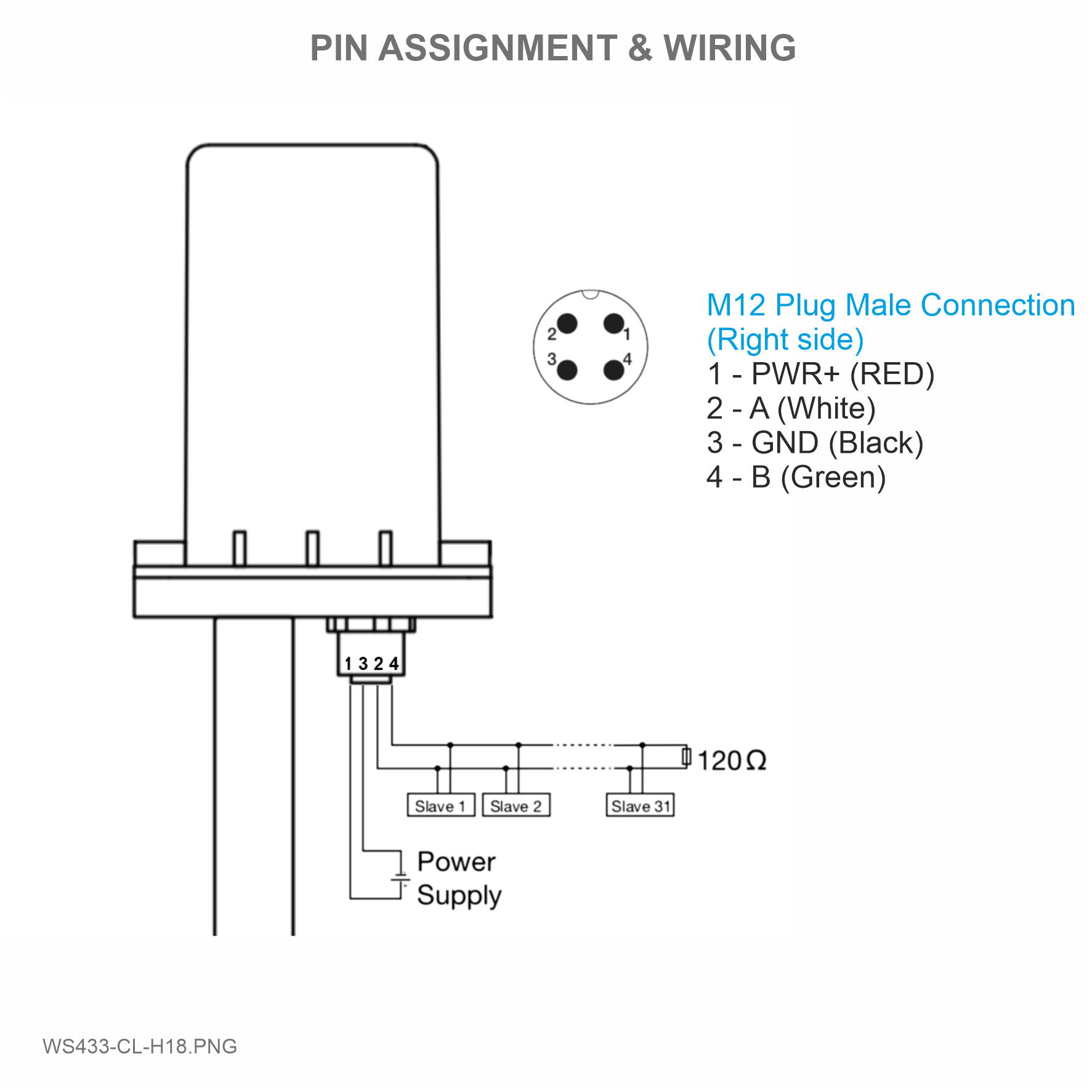 |
Step 1: After supplying power the Co-ordinator via M12 connector, the Node ID must be registered within the first 5 minutes, up to 40 WS.
Step 2: Bring the wireless sensor closer to the Co-ordinator's antenna then take off the wireless sensor battery, wait for 5s then insert the battery again. If:
- Buzzer plays 1 peep sound, LED blink 1 time, that means registering Node ID on Co-ordinator successfully.
- Buzzer plays 2 peep sounds, LED blink 2 times, that this Node ID is already registered.
If you do not hear the "Peep" sound, please disconnect the power the co-ordinator, wait a few minute and try again.
Node id added in this way will be written to the smallest node_id_n address which is = 0.
Set Rssi_threshold (see RF MODE CONFIG (in the Modbus Memmap of WS433-CL), default -25): The case if Co-ordinator is on high position and need to add node sensor. We set the sensor as close as possible and set the Rssi_threshold to -80, -90 or -100 to increase the sensitivity to allow WS433-CL-04 can add sensors at a longer distance. After that, perform 2 steps of adding sensors and then reset Rssi_threshold = -25.
Enb_auto_add_sensors configuration (see RF MODE CONFIG (in the Modbus Memmap of WS433-CL)): In case you do not want to turn off the power WS433-CL, you can set Enb_auto_add_sensors = 1, this way we have 5 minutes to add nodes (add up to 40 nodes) . After 5 minutes Enb_auto_add_sensors will automatically = 0.
Memmap resgisters
You can download Modbus Memmap of WS433-CL with the following link:
https://filerun.daviteq.com/wl/?id=BKEaUzdArkoc0Hc7nfpRShdPVToVrqQZ
6.2.2 Add sensor node into WS433-CL-04 (1) through intermediate WS433-CL-04 (2) and Modbus
In case the sensor need to be added to WS433-CL-04 (1) has been installed in a high position, the sensor cannot be brought close to WS433-CL-04 (1). For more details:
6.3 Button
Open the cover of sensor then use the push button to set the data transfer speed for the first 30 seconds when the battery is first installed, after 30 seconds the push button function does not work.
- Press and hold the button for 2 seconds => Buzzer beep once => Release the button to set Data rate RF 50kbps
- Press and hold the button for 5 seconds => Buzzer beeps twice => Release the button to set Data rate RF 625bps
- Press and hold the button for 10 seconds => Buzzer beeps 3 times => Release the button to reset RF parameters (frequency, RF output power, data rate), if held for more than 30 seconds then the button function does not work.
Reset default WS433:
Frequency: 433.92 MHz
RF transmit power: 15 dBm
RF data rate: 50 kbps
6.4 Configuration
First, you need to prepare
Num of Node will indicate the number of nodes managed by WS433-CL.
Every time a node is added, the Num of Node will increase by 1.
Every time a node is deleted, the Num of Node is reduced by 1.
Writing Num of Node = 0 will delete all 40 node ids to 0.
If you want to delete a node id, then write it = 0 with the Write function is 16 and the Read function is 3.
Step 1: Connect Antenna, RS485 - configuration cable and power supply co-ordinator
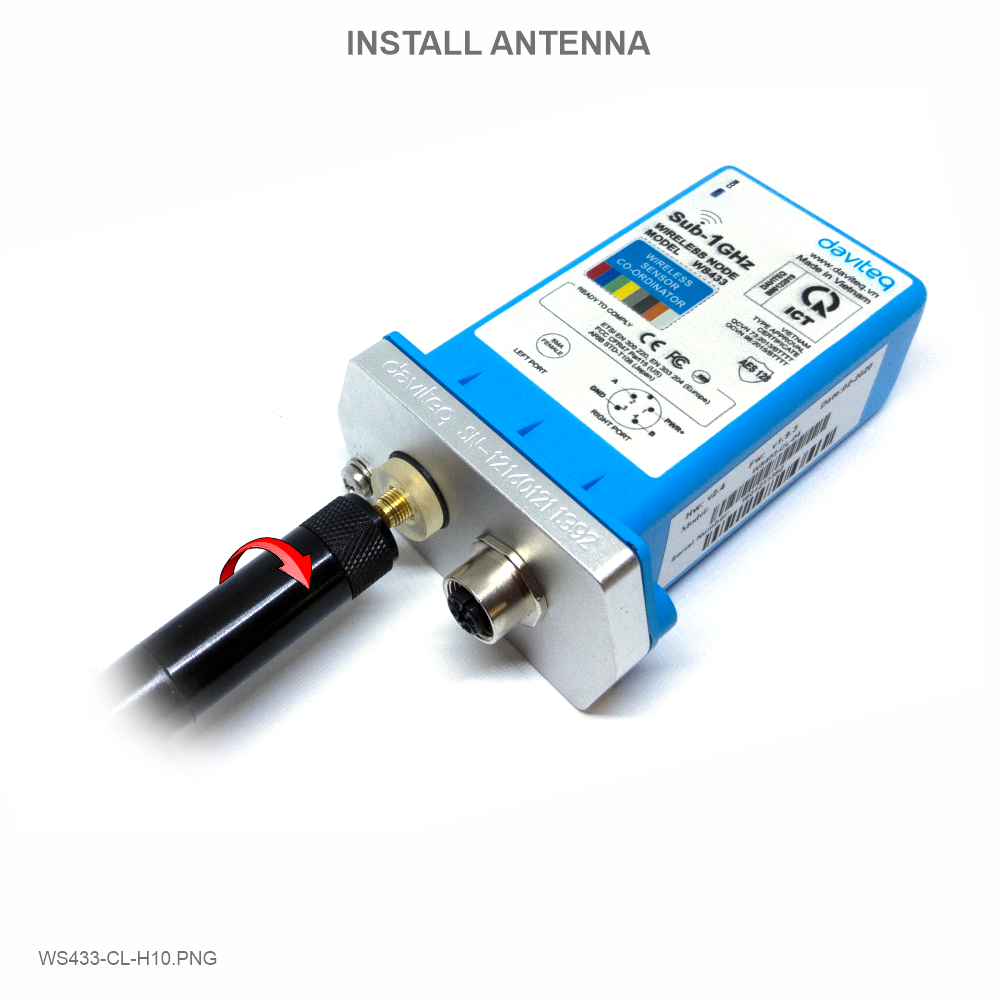 |
 |
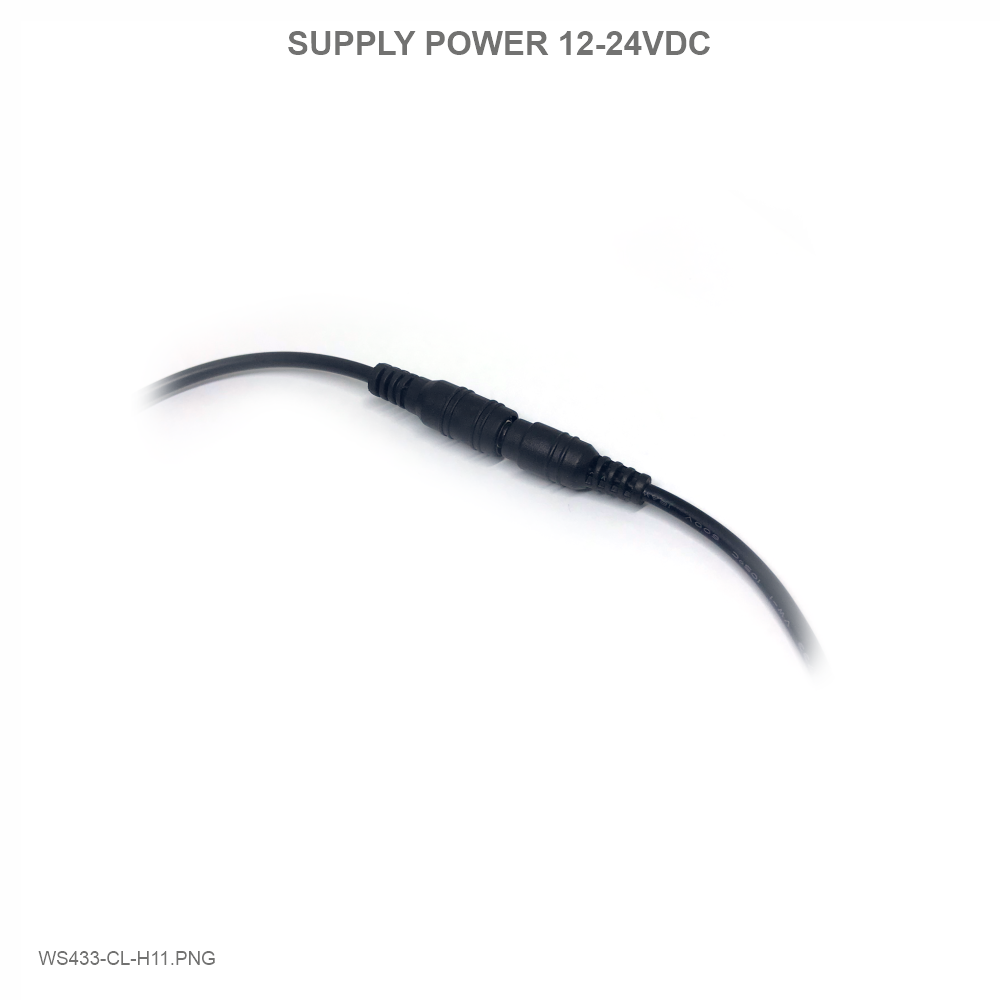 |
 |
Step 2: Open Modbus tool on PC
- You can download Daviteq Modbus Configuration Tool with the following link:
https://filerun.daviteq.com/wl/?id=yDOjE5d6kqFlGNVVlMdFg19Aad6aw0Hs
- Unzip file and run file application "Daviteq Modbus Configuration Tool Version"
- Choose COM Port (the Port which is USB cable plugged in)
- Set the BaudRate: 9600, Parity: none
- Click “ Connect “ untill the Status displays “disconnected” to “connected“. It means the WS433-CL-04 is being connected with computer;
- Next, we need to import the configuration file for WS433-CL-04 by importing the csv file: Go to MENU: FILE / Import New / => select the template file.
Step 3: Configure parameters of the sensor.
Memmap resgisters
You can download Modbus Memmap of WS433-CL with the following link:
https://filerun.daviteq.com/wl/?id=BKEaUzdArkoc0Hc7nfpRShdPVToVrqQZ
How to use Modbus Memmaps of Co-ordinator Excel file
In the memmap file, refer to the Memmap of WS433-G4F-NH3 sheet to configure the sensor's operating parameters accordingly.
The reference memmap addresses are based on the order of the sensors added in the Memmap file above
Typical sensor parameters:
|
Function Code (Read) |
Function Code (Write) |
# of register |
Byte Size |
Description |
Value Range |
Default |
Format |
Property |
Explanation |
|
4 |
|
1 |
2 |
%Battery of sensor Node |
10,30,60,99 |
|
uint16 |
Read |
Battery level, only 04 levels: 10%, 30%, 60% and 99% (full). When 10% ==> Need to replace the battery |
|
4 |
2 |
4 |
Ammonia value of sensor Node (parameter 1) |
mm |
float |
Read |
Value from ammonia sensor. This value is parameter 1 of a wireless sensor node |
||
|
4 |
1 |
2 |
Status bytes of sensor Node |
uint16 |
Read |
Hi-Byte is error code, Lo-Byte is sensor type |
|||
|
4 |
2 |
4 |
Temperature value of sensor Node (parameter 2) |
mm |
float |
Read |
Value from ammonia sensor. This value is parameter 2 of a wireless sensor node |
||
|
4 |
1 |
2 |
Logic status of parameters |
uint16 |
Read |
Hi-Byte is Logic status of parameter 1, Lo-Byte is Logic status of parameter 2 |
|||
|
3 |
1 |
2 |
Data status of Node |
0-9, 99 |
byte |
Read |
0-9: Interval updated data 99: Disconnected |
||
|
3 |
1 |
2 |
RF Signal strength of Node |
0-4 |
byte |
Read |
From 0 to 4 with 0 is being lost connection RF and 4 is the strongest RF |
||
|
3 |
16 |
1 |
2 |
Cycle_wakeup |
1-3600(s) |
120 |
uint16 |
Read / Write |
Every time interval of Cycle_wakeup, sensor node would ONLY send data to co-ordinator if the new measured value was changed more than the Delta value of the last measured value. Default Cycle_wakeup is 120 seconds |
|
3 |
16 |
1 |
2 |
Cycle_healthsta |
60-7200(s) |
600 |
uint16 |
Read / Write |
Every time interval of Cycle_healthsta, sensor node will absolutely send data to co-ordinator regardless any condition |
|
3 |
16 |
2 |
4 |
Co-ordinator id |
0 |
uint32 |
Read / Write |
Configure the ID number of Co-ordinator that wireless sensor want to connect to the Co-ordinator when only adding the sensor manually |
|
|
3 |
16 |
2 |
4 |
Radio frequency |
433.05-434.79, 433 Mhz |
433.92 |
float |
Read / Write |
Configure the operating frequency of wireless sensor by Co-ordinator, should be configured from 433.05-434.79 MHz, only for advanced users |
|
3 |
16 |
1 |
2 |
Tx power |
-10,10,15 |
15 |
int16 |
Read / Write |
Configure the RF power of wireless sensor by Co-ordinator, only for advanced users |
|
3 |
16 |
1 |
2 |
Data rate RF |
0-1 |
0 |
uint16 |
Read / Write |
Configure the air data rate of wireless sensor by Co-ordinator, only for advanced users |
|
3 |
16 |
2 |
4 |
High_threshold_1 |
0 |
float |
Read / Write |
High threshold value for parameter 1 |
|
|
3 |
16 |
2 |
4 |
Low_threshold_1 |
0 |
float |
Read / Write |
Low threshold value for parameter 1 |
|
|
3 |
16 |
2 |
4 |
High_threshold_2 |
0 |
float |
Read / Write |
High threshold value for parameter 2 |
|
|
3 |
16 |
2 |
4 |
Low_threshold_2 |
0 |
float |
Read / Write |
Low threshold value for parameter 2 |
|
|
3 |
16 |
1 |
2 |
Num_of_sample |
|
float |
Read / Write |
Number of sampling times |
7. Installation
7.1 Installation location
Wireless sensor utilize the ultra-low power 433Mhz RF signal to transmit/receive data with Wireless co-ordinator.
To maximize the distance of transmission, the ideal condition is Line-of-sight (LOS) between the Wireless sensor and Gateway. In real life, there may be no LOS condition. However, the two modules still communicate each other, but the distance will be reduced significantly.
ATTENTION:
DO NOT cover the Wireless sensor or its antenna inside a completed metallic box or housing, because the RF signal can not pass through the metallic material.
NOTE:
Integrated WS433-CL / iConnector Coordinator The coordinator must be placed at least 4 meters above the ground and the WS433-G4F-NH3 clearly visible.
7.2 Mounting
7.2.1 Installation method
Mounting the sensor on the wall or the ceiling
WARNING:
DO NOT install the sensor too far the WS433-CL because the signal can't transmit not so far thru thick steel core concrete wall. So that you should check the signal transmit before mounting Sensor/WS433-CL
Step 1: Determine the area that needs to measure the ammonia sensor
Step 2: Open the cover by using flat head screwdriver
Step 3: Mounting bottom cover of the sensor on the wall or the ceiling
Step 4: Install the bottom housing, please take note slot of the housing
7.3 Battery installation
Steps for battery installation:
Step 1: Open the cover by using flat head screwdriver
Step 2: Insert 02 x AA 1.5VDC battery, please take note the poles of the battery
ATTENTION:
REVERSED POLARITY OF BATTERIES IN 10 SECONDS CAN DAMAGE THE SENSOR CIRCUIT!!!
Step 3: Reinstall the bottom housing, please take note slot of the housing
8. Troubleshooting
| No. | Phenomena | Reason | Solutions |
| 1 | The status LED of wireless sensor doesn't light up |
|
|
| 2 | Wireless sensor not connected to co-ordinator |
|
|
9. Support contacts
|
Manufacturer Daviteq Technologies Inc Email: info@daviteq.com | www.daviteq.com |

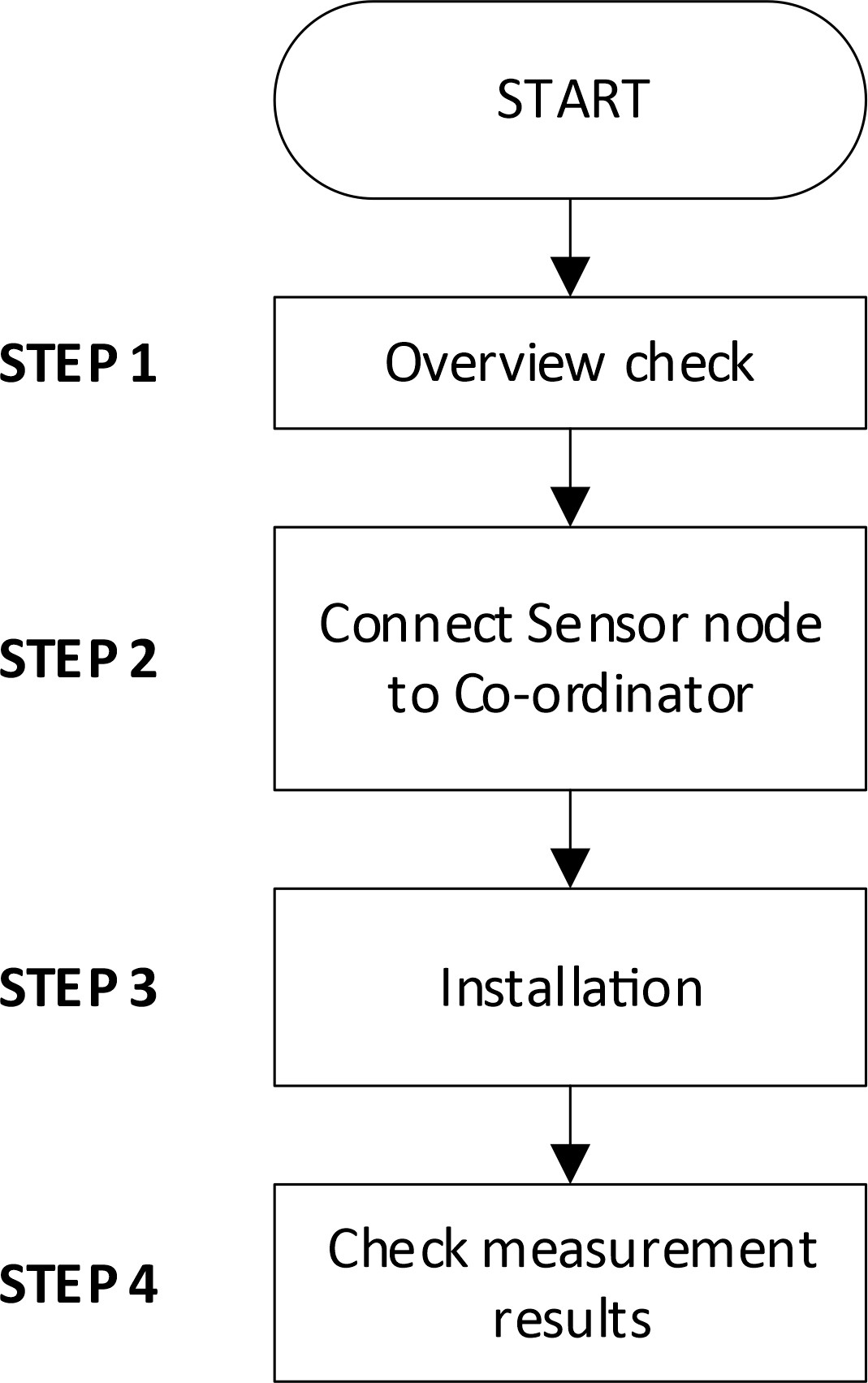
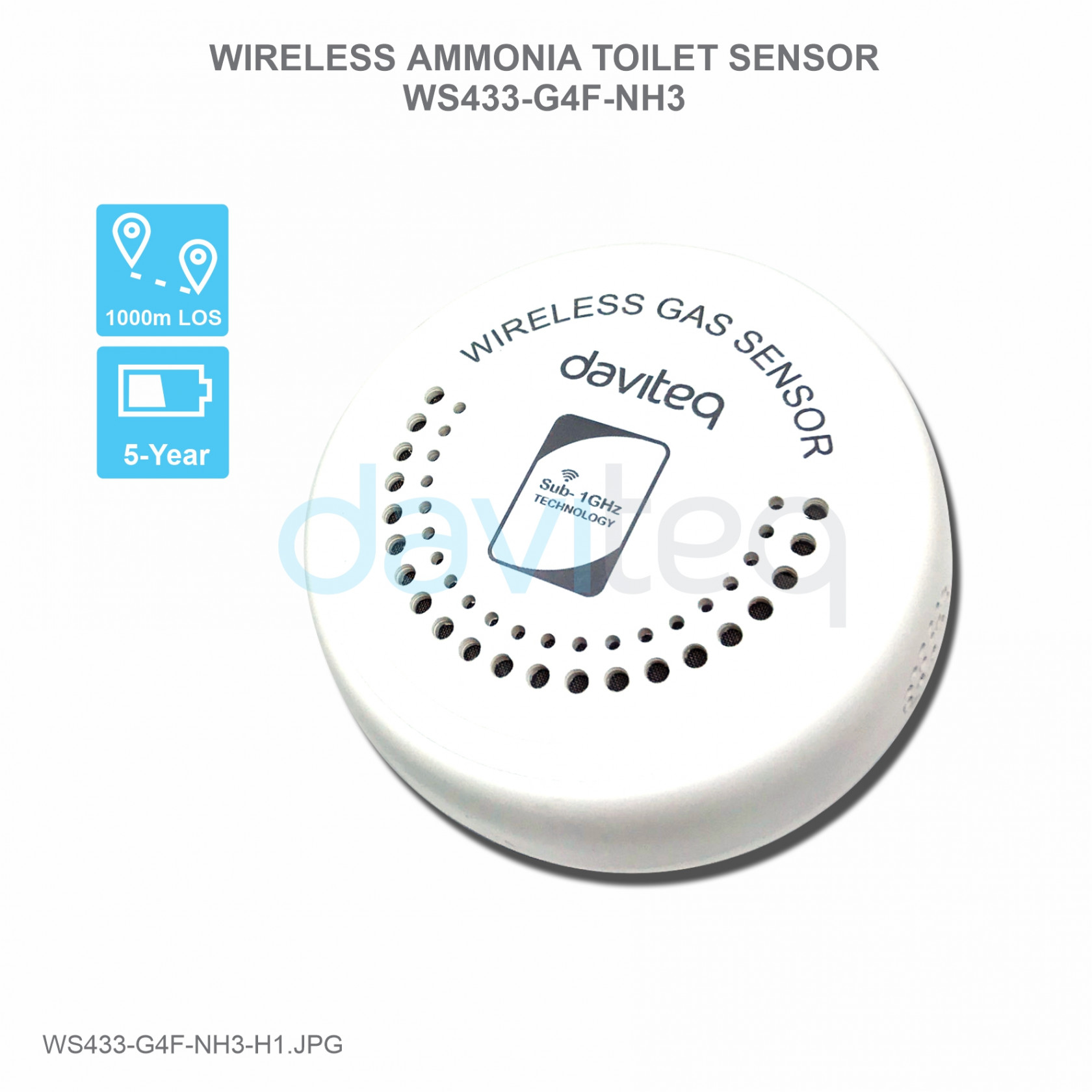
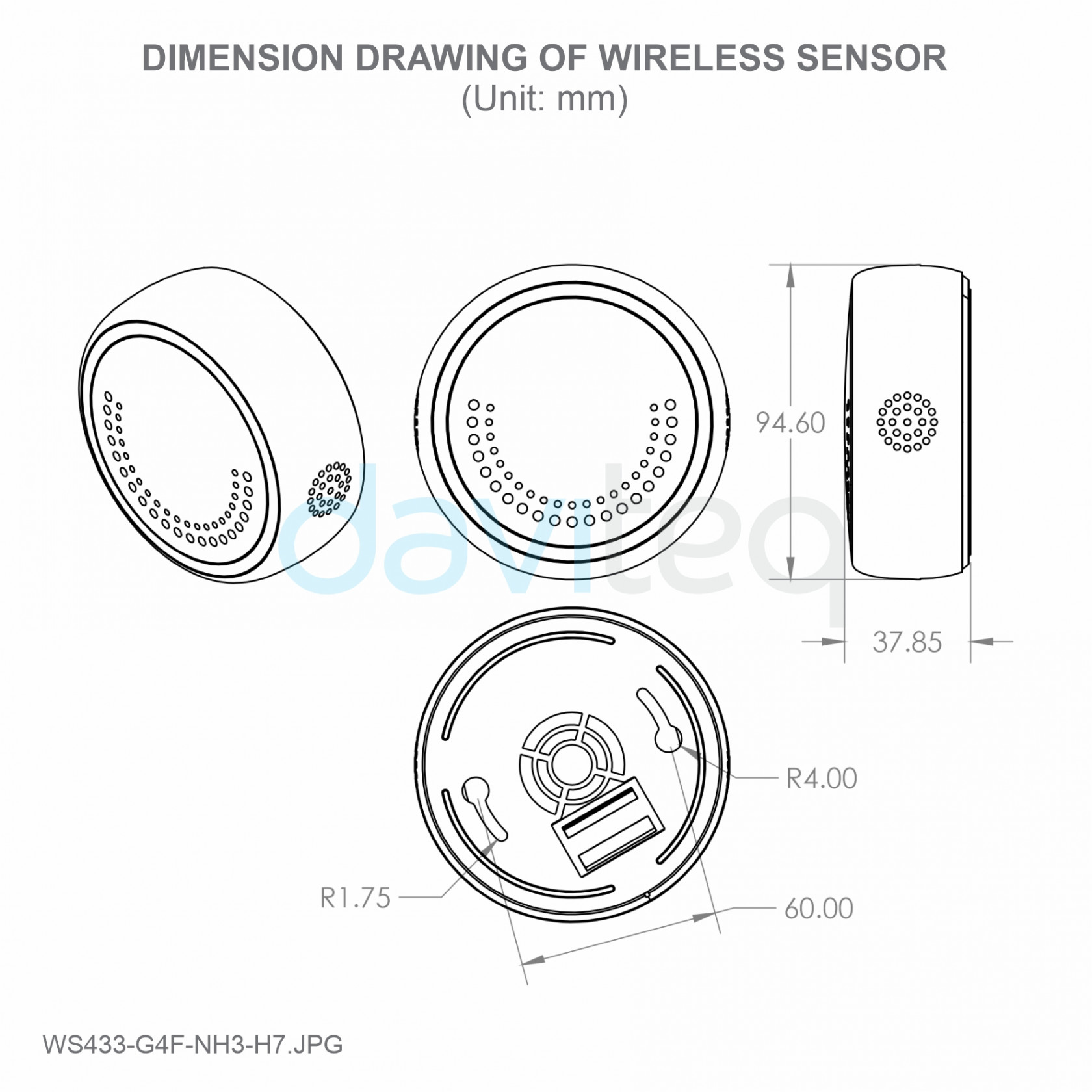

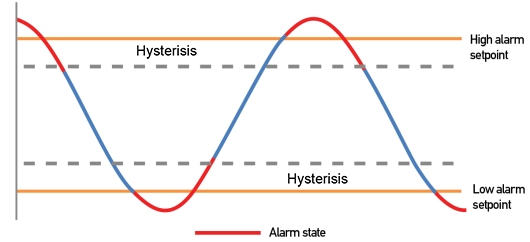
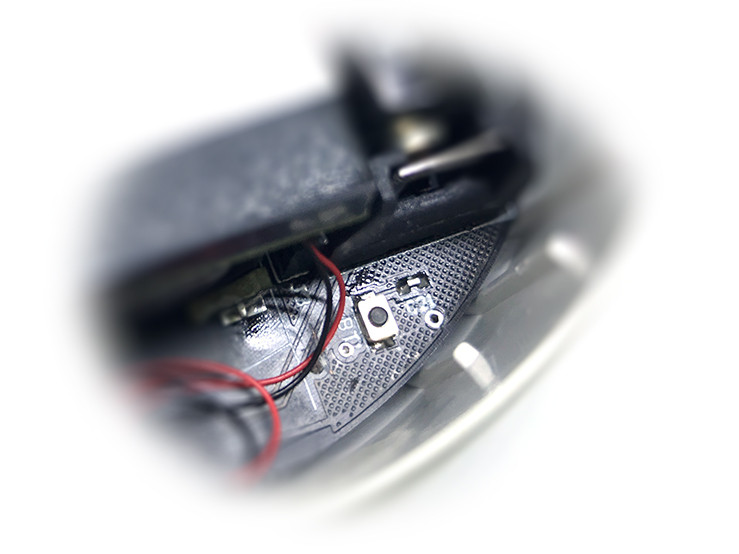



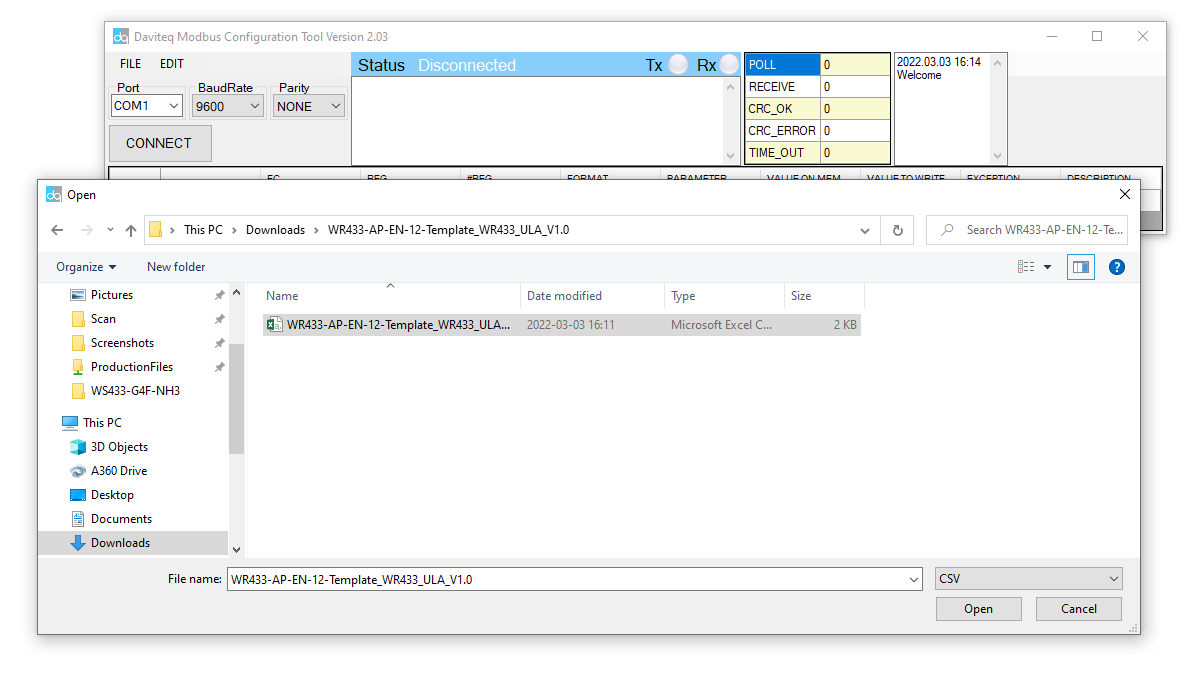


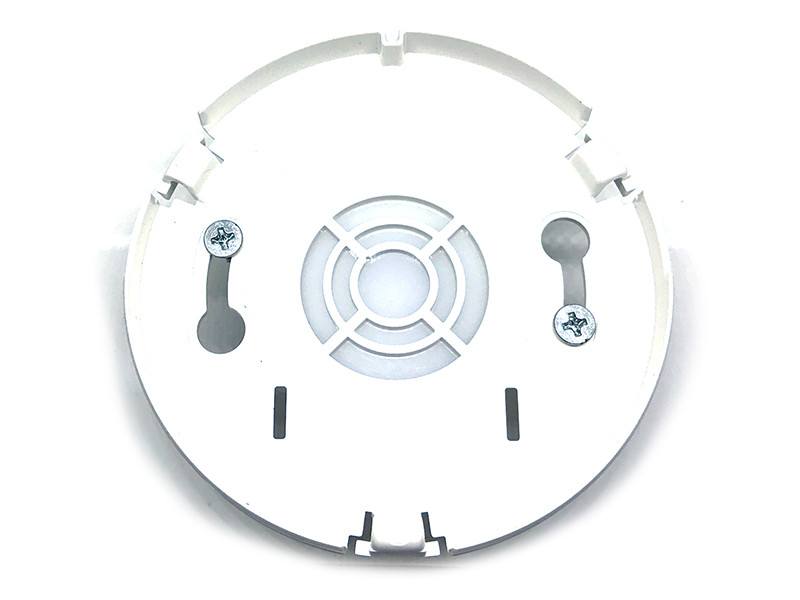
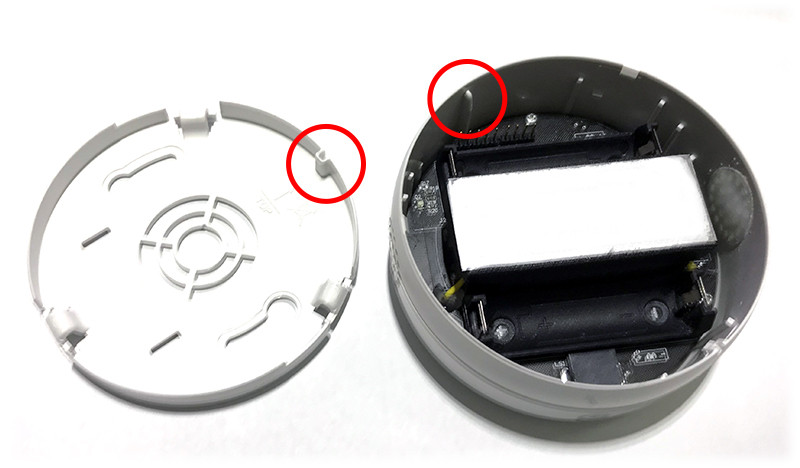
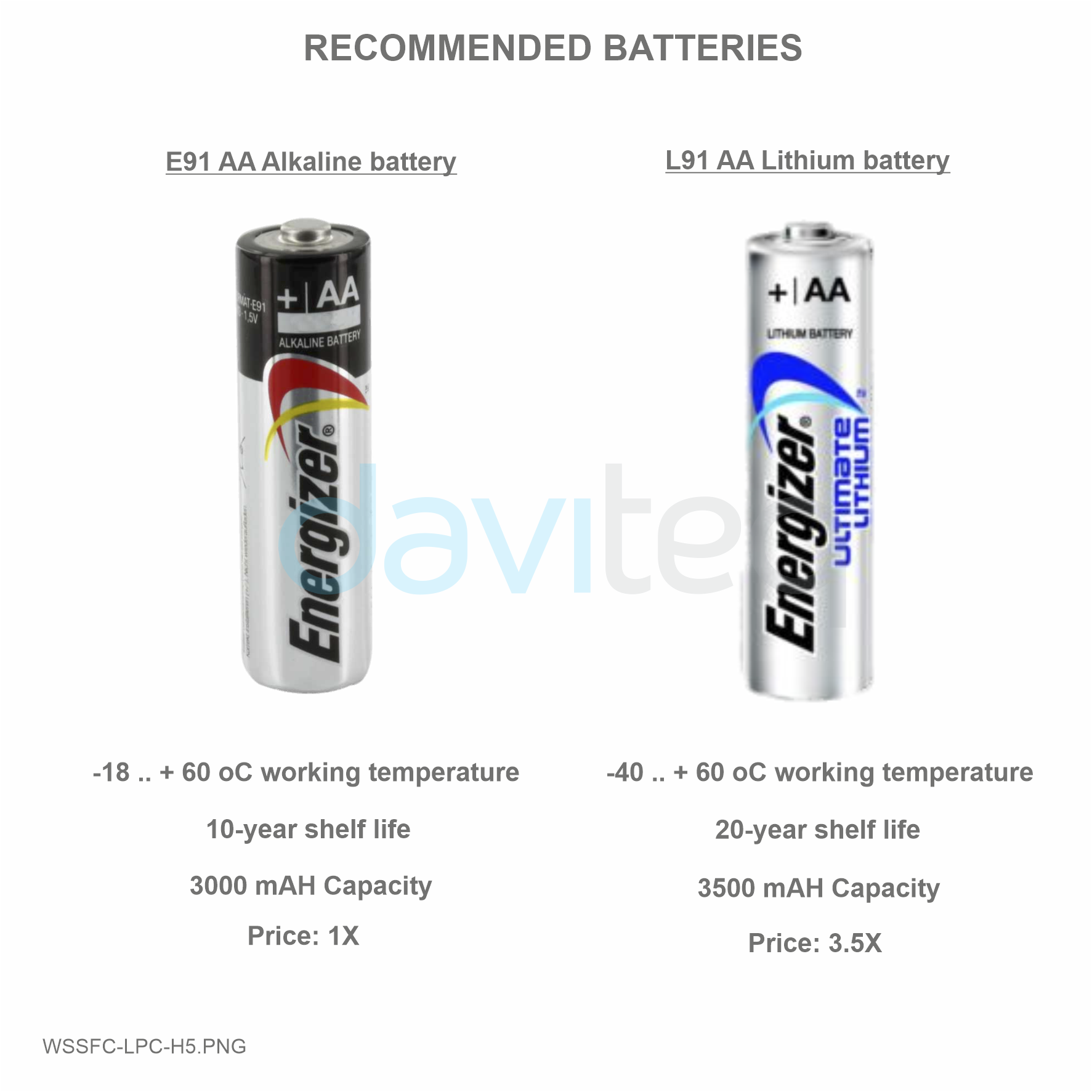
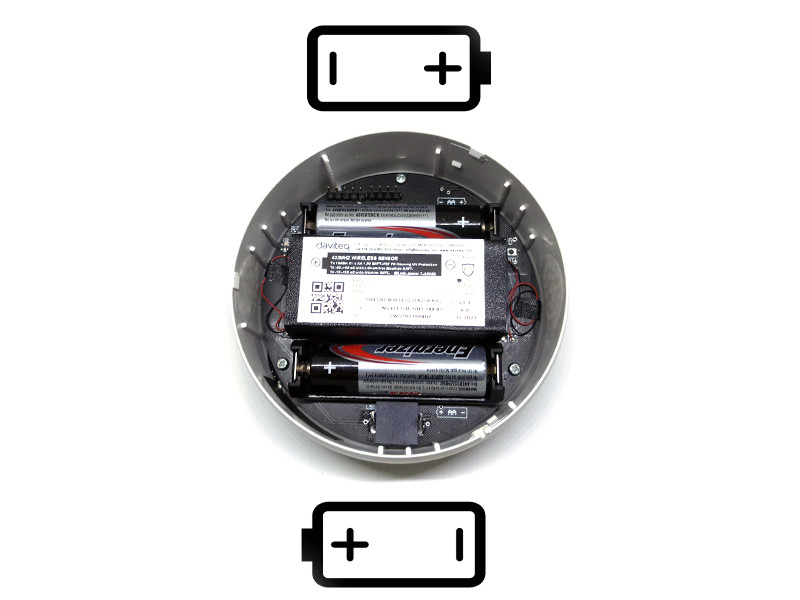

No Comments